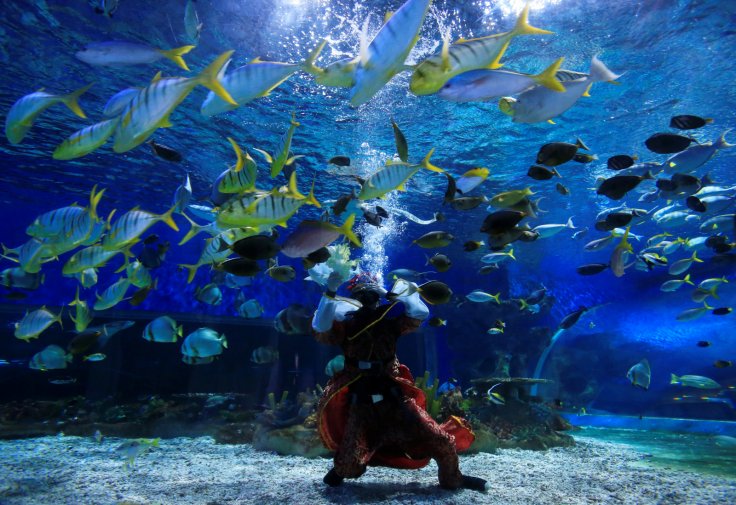The International Union for Conservation of Nature (IUCN) has updated the Red List, according to which a high percentage of the world's plants and animal species are at risk of extinction.
The list was updated on Thursday, December 10, and it now includes over 35,700 species representing almost 30 percent of the world's plants and animal species, which are currently threatened with extinction. The list now includes all of the world's freshwater dolphins, 40 percent of all amphibians, and about one-third of all oak trees.

Vanished Species
According to the Red List, at least 31 species have already vanished from the world. It includes many freshwater fish species from Lake Lanao in the Philippines which became completely untraceable due to overfishing and the introduction of predatory species in the area. Three frog species from central America have also been declared extinct by the IUCN.
In a recent statement, Bruno Oberle, IUCN's director-general, said that the growing list of extinct species is a serious reminder that conservation efforts must expand urgently. "To tackle global threats such as unsustainable fisheries, land clearing for agriculture, and invasive species, conservation needs to happen around the world and be incorporated into all sectors of the economy", he added.
He also noted that even though the recently updated Red List portrays an overall grim picture, it also provides strong evidence of the efficacy of conservation. It was found that the population of at least 26 species has increased in recent years due to efforts made by conservationists.
BREAKING NEWS: The IUCN Red List has just been updated, showing that the European Bison and 25 other species are recovering. At the same time, 31 species have been declared Extinct. Find out more: https://t.co/8XS4v2fydn pic.twitter.com/pFbRYroveL
— IUCN Red List (@IUCNRedList) December 10, 2020
For example, Red List has reclassified European bison, the largest land mammal of the region as "near threatened" from its previous status "vulnerable". In 2003, the species numbered 1,800 but now there are about 6,200 European bison living in the wild.
Jane Smart, global director of IUCN's Biodiversity Conservation Group, said in a statement that the success story of the conservation efforts is proof that the world can set, and meet ambitious biodiversity targets. "They further highlight the need for real, measurable commitments as we formulate and implement the post-2020 global biodiversity framework," she added.
NEWS: Continued conservation efforts have moved the European bison from Vulnerable to Near Threatened in the latest @IUCNRedList update https://t.co/X2zfKqtoiR #ConservationWorks pic.twitter.com/AkGnBy2wD2
— IUCN (@IUCN) December 10, 2020
Fix The Future
Climate change is not a fancy word that has been used by environmentalists, but a dramatic global change that is happening around the world and threatening all the living beings of Earth. Polar bears in the Arctic region are pushed towards a dark future. Climate change-driven bush fires are causing wild animals to leave their habitats and putting them under extinction threat. For example, Koalas are "sliding towards extinction". A recent report claimed that Australia's climate is expected to become warmer and drier, increasing the risk of drought and extreme environmental incidents like bushfires that will affect the wildlife.
As the carbon emission has emerged as the top talking point in terms of fighting against global warming, Alden Meyer, an analyst at the E3G climate change think-tank, said: "Emissions are not being reduced at the rate that science says we need."
The rapid expansion of wind and solar energy along with an increasing number of electric vehicles may make some difference, but the battle against the warming climate won't be over until all the countries vow to take action as soon as possible. Vanessa Nakate, a Ugandan campaigner, said: "You already determined our present, which is obviously catastrophic. Now fix the future."









